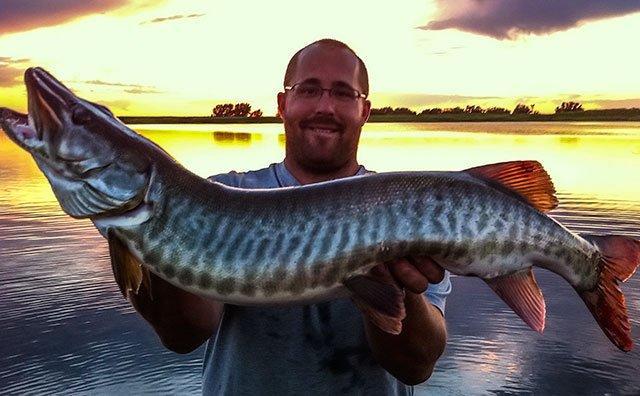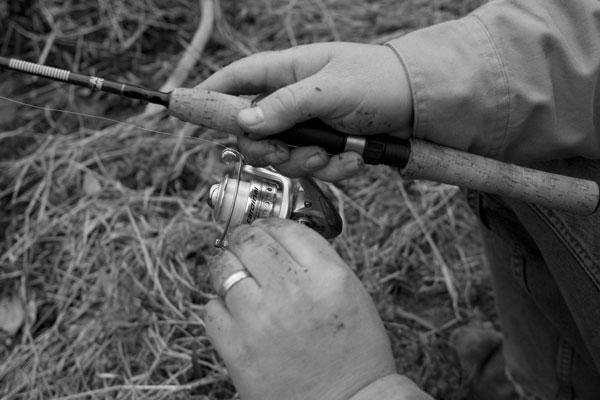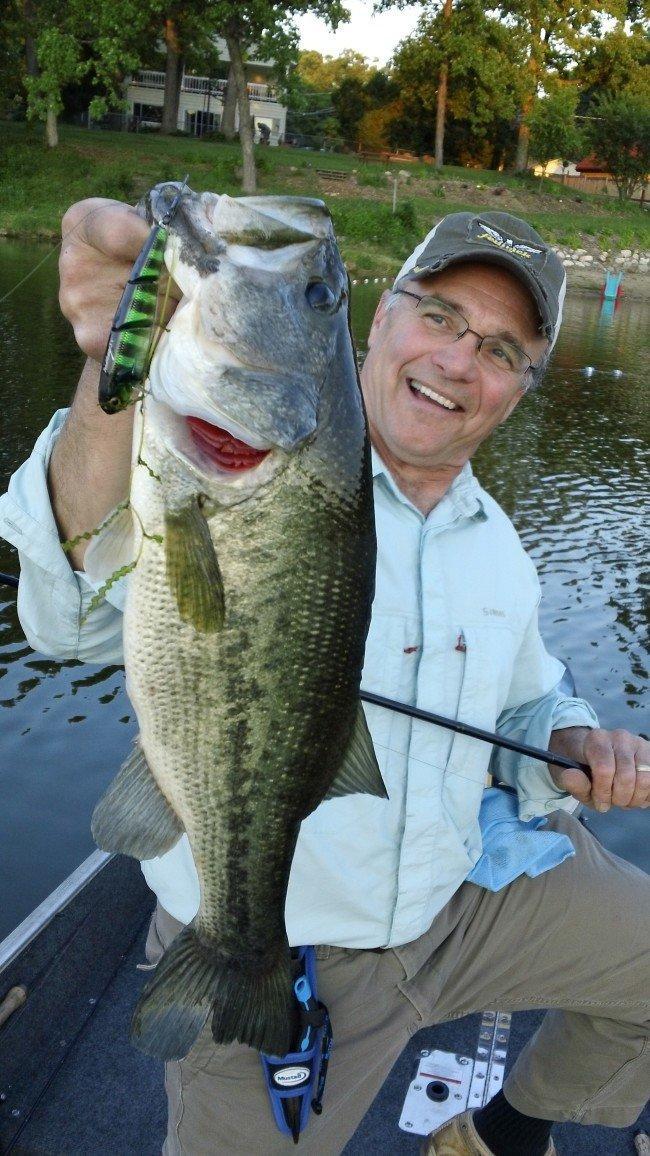Bank fishing is what taught many of us to love fishing as children. Speaking personally, there was always something transcendent and pioneering about dodging ant hills, chasing thirsty cows out of my honey holes and catching unsuspecting bass without even needing a boat. As I write this piece today, those boyish feelings haven’t left me. In fact, they’re just as strong as they ever were.
Between guide trips and tournaments, I still make the effort to go back to my roots and stand on the banks of my favorite pond. Whether you’re a bank angler by choice or by circumstance, it’s important to understand you don’t need a boat to catch big bass. I believe there are 5 things you can do to have more bank fishing success.
- Dark clothing is important
- Keep your distance when you first arrive
- Start with finesse techniques
- Keep casting angles in mind
- Watch for environmental cues
1. Wear dark clothing
Now this may not me the most comfortable choice of apparel in the summer months, but it pays big dividends, especially when targeting shallow bass. I’m not suggesting you dress in a black jumpsuit, but even a dark t-shirt can really help your cause.
In my opinion, bass have much better eyesight than we give them credit for. Bass look upward for 2 primary reasons—for protection and for food. Whether they’re protecting newly hatched fry or looking to avoid predators, they can be fairly paranoid animals. I’ve also noticed that bass frequently look upward for feeding opportunities as I’ve witnessed many pond bass swim toward my bait before it even hits the water.
Stealth is the name of the game for bank anglers and a bright-colored shirt is going to give your position away in a hurry. Just like when I’m bed fishing on a big fishery, I like to wear a dark green or dark blue shirt to help my silhouette blend in with surrounding trees or clear skies.
2. Keep your distance from the water
More often than not, I catch my biggest pond bass within the first 5 casts of the day. Am I that good of an angler? Absolutely not. I do, however, make a concerted effort to stay as far away from the water as I can—especially when I first arrive.
There isn’t a worse feeling than approaching the water of your favorite farm pond, only to see the huge swirl of a spooked bass. It used to happen to me all the time, so I just started fishing from further away. There are always going to be some big, shallow pond bass regardless of the time of year, so make your first few casts count and catch them off-guard. When you’re convinced you’ve covered the area thoroughly, you can then start moving closer to the water to achieve the more desirable casting angles.
3. Start with the quiet, finesse techniques
We always hear the professional anglers talk about “picking off” the most aggressive bass with reaction baits before using more subtle presentations to catch the more lethargic fish. I’m well aware what I’m suggesting is the polar opposite, but hear me out.
Pond bass are much different than big lake bass because in most cases they’re much less pressured. These pond bass aren’t used to having loud, shiny and intrusive baits whiz past their faces and in many cases they’ll get spooked by these louder presentations. For this reason I like to use a weightless presentation, such as a wacky rigged Yamamoto Senko, for my first couple of casts. It enters the water quietly, has a very natural, non-threatening profile and won’t spook those wary, giant bass.
4. Keep your bait in the strike zone for as long as possible
Understanding the proper casting angles is very important when fishing out of a boat on large fisheries, but it’s even more critical when fishing from shore. As I mentioned earlier, there always seems to be a good population of shallow bass on small ponds, so I like to start by targeting shallow water.
In order to do this, I cast parallel to the bank most of the time—even if it means leaning over the water and making an awkward, ugly looking cast. Make a long cast and slowly work your bait within inches of the shore and you’ll be shocked by how shallow big bass will be positioned. After a few identical casts, I’ll begin making quartering casts in the shallow areas, dividing the area into small “grids”. If there’s a shallow bass to be caught, there’s a high probability you’ll catch it with this technique.
5. If there’s a lack of cover, watch for environmental cues
We all dream about fishing small ponds laden with sexy blowdowns, stump flats and thick grass, but unfortunately for us, they’re hard to find. When you find yourself fishing small waters with limited cover, don’t be discouraged—environmental cues can be a dead giveaway to solid bass fishing.
I look for 2 specific environmental cues when bank fishing—wind and shade. Heavy winds blow plankton, baitfish, small panfish and most importantly bass to very predictable places on small ponds. For this reason, it’s always a good idea to focus your efforts on windblown banks. Although it can be irritating for casting purposes, especially when you’re surrounded by trees, it can produce some really big bass. Combine a windblown bank with the proper casting angles and you’re giving yourself an excellent chance of catching a giant bass.
Shade is also very important. In the absence of cover, look for any available shade spots as bass will position on the edge of shade lines just as they would a stump or fallen tree. Shady areas provide bass with both cooler water temperatures and a sense of security.
Pond fishing is one of the best ways to become a better bass angler. If you’re looking for an inexpensive way to catch trophy bass, don’t be ashamed to head to a local pond this summer. Not only will you have a blast, but you’ll have the chance to hone your bass fishing skillset.


















